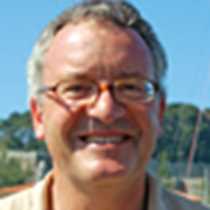Iona and the Isle of Mull
Expedition Leaders are not by nature over cautious or even risk averse, but when I promised the group sunshine on Iona as we walked back under our umbrellas from Kinloch Castle on Rum even I feared that I might be pushing my luck. Our visit to Iona was scheduled for the following day and the weather outlook did not look promising. By the time of the evening briefing I covered myself by saying that Iona was always sunny, even when it was raining. As it happened, however, my earlier confidence was not misplaced and we were treated to as fine and sunny a midsummer’s day as one could hope for on a Hebridean island.
For there is indeed something special about Iona that has my memories of the place bathed in sunshine. I do not know fully how to account for this. There is the warmth of the welcome of the good people who live there and the sense of reverence that affects all visitors to the island. To this one can add the qualities of a microclimate that does indeed reduce rainfall to below local averages. Then there are such local factors as the white sandy beaches, made of grains of quartz from the granite of the adjacent Ross of Mull, that produce a shockingly tropical turquoise sea. The same pink granite in the ruined Augustinian nunnery catches the sun beautifully and is as much photographed as the Abbey itself or the island’s splendid collection of High Crosses, including the iconic St Martin’s Cross, the original Celtic cross from which all subsequent versions are derived. Traditionally, Iona been described as a “thin place,” a sacred space where the boundaries between the here and now and the far yonder are more easily penetrated.
Iona was probably a sacred place before Columba arrived in 563AD. Its name means island of yews, the sacred tree of the ancient Celts. Columba brought the Christian faith to this part of Scotland, or rather consolidated its Gaelic speaking redoubt in the Age of Saints. From Iona, Christianity was spread along the Great Glen into the territories of the Picts, a route we shall follow all the way to Inverness. From there, via Lindisfarne, Christianity was returned to continental Europe after the disaster of the fall of Rome when Christian civilization had been eclipsed by barbarian invasions.
After a morning tour of the Abbey and lunch in the St Columba Hotel we returned over Mull to visit Duart Castle, the ancestral home of the Clan Maclean. A strategically located mediaeval tower house, the castle was restored in the early years of the twentieth century. Offset with grazing highland cattle, it is an impressively romantic pile and with the fine weather persisting we were treated to exceptional views of the distant mountain ranges of the Scottish mainland.




